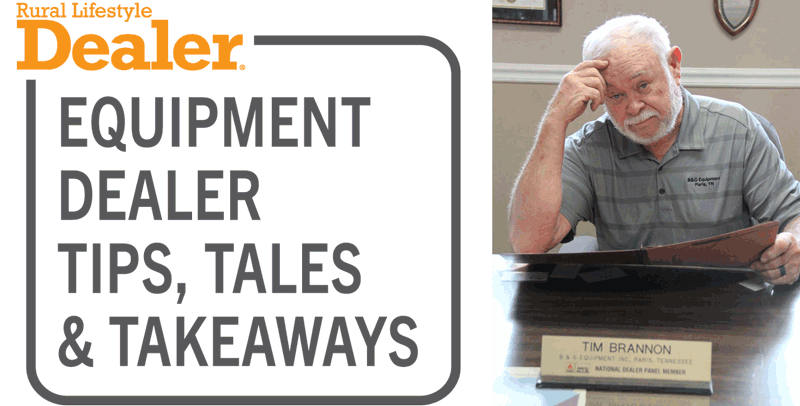We all receive a plethora of information every time we open browser, email, smart phone (get phone call from the mother-in-law) or thumb through an old-fashioned magazine. What we do with all that information can be a ladder to success or a formula for depression. Enter the old story of two shoe salesmen, both sent to remote Africa. One writes back, "Returning home. No one wears shoes here." The other salesman who was at the same location writes, "Wow, no one wears shoes here. Double my order!" Using this information we have, one should look for the positive opportunities in the ink of print and the cloud of the internet.
We looked at two recent reports and have tried to glean some information that would spur activity to generate some sales strategies. The first was a recent seminar with Bob Clements about the largest market segment: Millennials, 28-43 years of age. The second report was some top take-aways from the latest U.S. Farm Census report. This report shows the average age of the U.S. farm population inching up to just under 60 years of age. This means there will be a lot of farm land that will be changing hands in the next few years as farms or parts of farms are sold, inherited, merged and in some cases generating small "farmets." One former running mate, Jerry Oxborough called this phenomenon the 220 market — late 20-ishers owning 2 horses and 20 acres. This is a rich market possibility for rural lifestyle dealers. The predictions are this market could approach $60 trillion of revenue to tap into.
Another gleaned fact is the continuing trend of fewer, larger traditional farms, even greater urban sprawl and competition for the land that "they ain't making any more of." There is a seemingly contradictory stat that there will be more numbers of younger farm owners and decision makers. These farm numbers will be increasingly controlled by these millennials. The resulting changes will spur a need of new equipment to maintain, cultivate and add conservation/sustainability methodologies to a lot of these farm acreages.
So, what does this mean to us dealers in a reader's digest version?
One, the market will be there long term, despite hiccups, politics, elections and politicians that didn't pass Econ 101.
Two, for us to be ready we need to have the equipment necessary to meet their demand.
Three, to sell this equipment we must speak the language of these customers as to technology and virtual, online presentations they are looking for. Their time is precious. They will drive their devices and not their SUVs or pickups in shopping for needed equipment and service.
Four, they will check us and our products out in many ways and in some cases know more about our strengths and short comings than we do.
Fifth and finally, (there goes my alliteration again) they will be looking for a gentle yet authoritarian dealership that gives them confidence in the investment they are about to make.
They are millennials. In case you have not looked around, the heyday times of the past few years of setting back and taking orders are over. Customers have a lot of choices in equipment sitting on lots for sale, soon starting to draw interest. Are we "getting in shape" to compete in the market place? We had better do sit-ups to better service, pushups to more promotions and watch the diets of orders to maintain a long-distance run in the market awaiting us.
'Til next time wishing you miles of smiles and profit-making abilities.
|
Told from the perspective of an in-the-trenches owner/operator — Tim Brannon of B&G Equipment, Paris, Tenn. — Equipment Dealer Tips, Tales & Takeaways shares knowledge, experiences and tips/lessons with fellow rural equipment dealerships throughout North America. Covering all aspects required of an equipment dealership general manager, Brannon will inform, entertain and provide a teachable moment for current — and future — leaders within equipment dealerships. |
 |






Post a comment
Report Abusive Comment